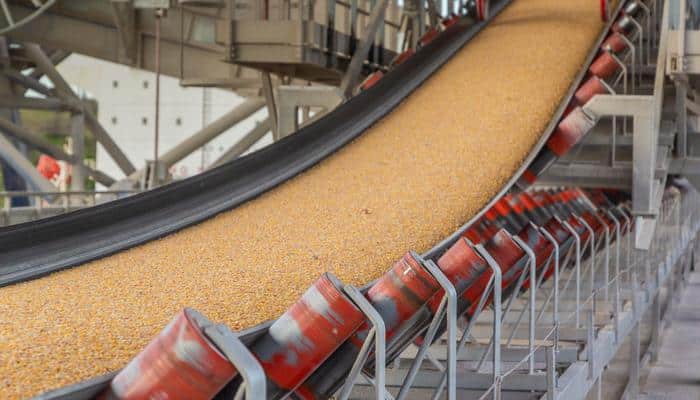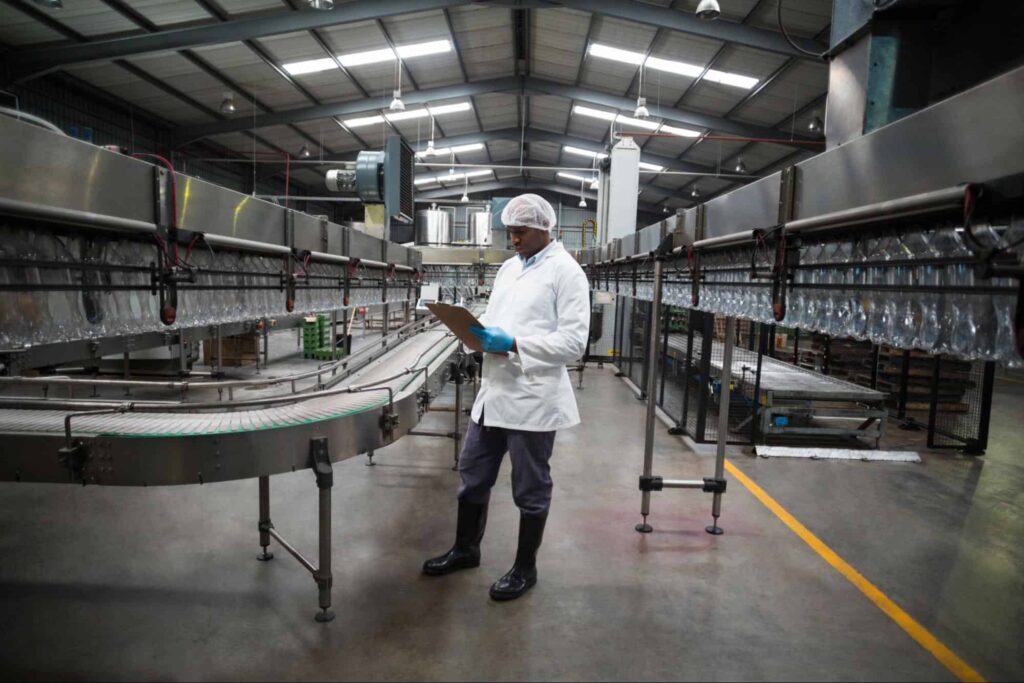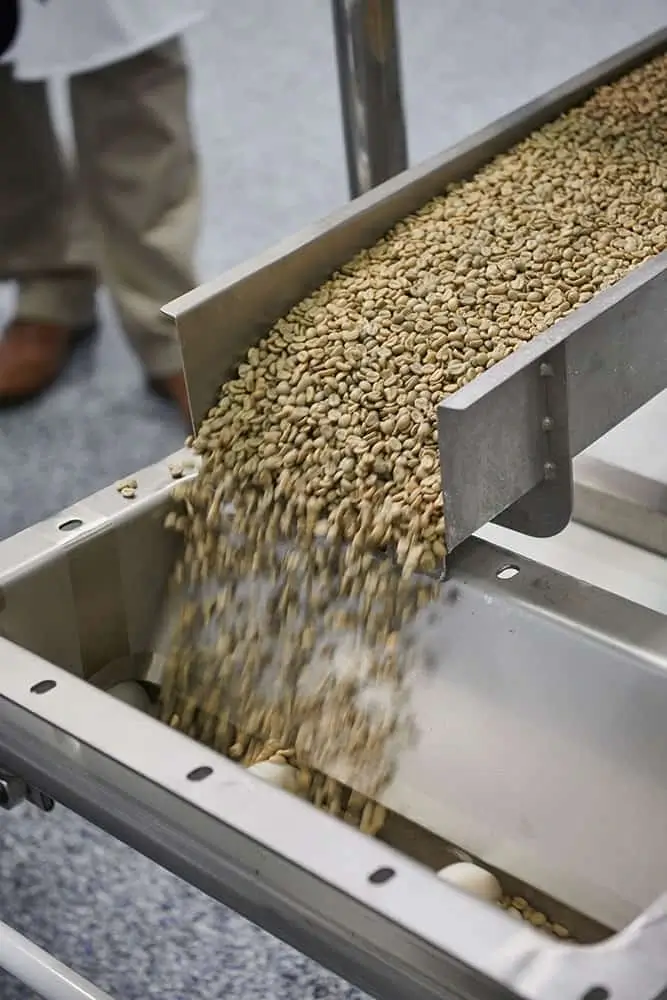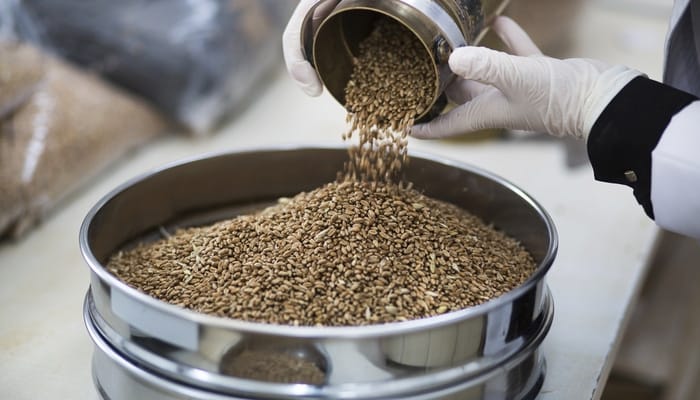Unlocking the efficiency and functionality of a grain tube conveyor is essential for businesses in the specialty grain industry. In this comprehensive guide, we delve into the intricacies of how grain tube conveyors work. Join us on a journey through the automated world of Cablevey Conveyors and industrial conveyor systems, discovering the key elements that make them indispensable in modern grain handling.
How Grain Tube Conveyors Work
A grain tubular conveying system operates by utilizing tubular drag technology enclosed within dust-free tubes. These conveyor solutions efficiently move bulk materials, including specialty grains, powders, and frozen foods. With a focus on preventing contamination and ensuring easy maintenance, they excel in preserving grain quality. The unique design facilitates gentle handling, minimizing breakage and degradation during transportation, making them a reliable and essential solution in modern grain processing and handling facilities.

Choosing Efficient and Safe Grain Automated Conveyor Systems
Businesses operating in the specialty grain industry will need to rely on grain conveyor systems that are not only efficient but also safe and capable of moving significant volumes of material while also maintaining spillage at an absolute minimum. To that end, several types of transportation equipment can be used throughout different parts of the grain and seeds handling process.
- Screw Conveying Systems
These conveyor technologies, also known as utility augers, use a helical blade to push the grain from one place to another. The blade is built into a round tube that keeps the material from being pushed to the sides. They are primarily used for moving grains from storage silos or for moving harvested grains from field loaders to the combine.
- Belt Conveyors
A grain belt conveyor system is a more common occurrence when it comes to handling bulk materials, such as grain and seeds, when transported from trucks to the processing facility. This makes them an unavoidable part of almost any processing facility.
- Pneumatic Conveyors
Pneumatic conveyor systems use a vacuum or pressurized air to move lighter materials around. They can also be used to separate the grains from smaller pieces and dust particles. In some cases, pneumatic systems can be used to transport milled grains that have been turned into flour. However, because of their high energy requirements and high probability of clogging, they are not used for this purpose too often.
- Bucket Elevators
Bucket elevators are used to move grains from the ground to an upper level of the facility. They are typically used in combination with other manufacturing conveyor systems, such as cable and disc conveyors, conveyor belts, screw conveyors, as well as shakers and vibratory units.
Most of these transportation equipment use fairly simple machinery to operate. This means that major failures are rare, and the equipment is designed to handle large volumes of bulk materials. However, this doesn’t mean that some of these systems don’t have maintenance issues, particularly when handling material that they weren’t specifically designed for. Companies should also take into consideration product degradation if the wrong automatic conveyor system is used.
What Is Grain Quality Degradation?
The optimum result in terms of grain harvesting is to maintain its initial quality as much as possible. However, several factors can result in quality degradation, which requires a quick intervention to minimize the damage as quickly and as effectively as possible. Some of the main reasons for quality loss happen during the drying process, as well as during storage and handling.
Keeping the right grain moisture and temperature is also essential in maintaining the initial quality. Dry storage allows for higher temperatures, which will help prevent both mold growth and insect infestation.
Grain and seed damage can also occur during the mechanical handling of these grains. Damage can occur because of high-velocity impact, stress cracking, and improper temperatures. These can also lead to mold and insect population growth, further lowering the grain’s quality. Choosing the right material handling system for the job is key to minimizing this type of damage.
Optimal Choices for Specialty Grain Handling – Cable and Tube Conveying Solutions
The list of industrial grain conveyor systems can be quite long. Going from aero-mechanical to pneumatic, screw augers, conveyor belt systems, and bucket elevators, to name a few, the choice needs to fit the application. If you are looking for gentle and dust-free specialty grain handling equipment, cable and tube conveying systems are a fit worth your consideration.
Tubular conveyors have moved materials in a safe, clean, and efficient manner for many decades, making them ideal for moving bulk materials, powders, grains, and mixes throughout the production and packaging phases.

Applications in Food Processing – Enhancing Quality With Tube Conveyors
The food processing and beer brewing industries have made great use of grain tube conveyors. As their name would suggest, tube conveyors move bulk materials such as powders, snack foods, cereals, frozen fruits and vegetables, and specialty grains in enclosed and dust-free tubes. These prevent any foreign substances from contaminating the product while also keeping any dust particles from escaping into the environment.
In addition, they help transfer all sorts of blended materials, such as rice combined with various herbs, spices, and other added ingredients, and keep them from separating during transit. So, what do these types of conveyors actually do to help maintain the quality of the value-added grain product? Let’s check out.
Preventing Product Contamination
Tubular drag conveying systems have proven themselves to be one of the most reliable material handling equipment to achieve a high level of sanitation. Over the past decade, the US Food and Drug Administration (FDA) has stepped up its product safety procedures in an attempt to eliminate the incidence of food contamination and cross-contamination.
In fact, this was the case with the 2008 Peanut Corporation of America’s (PCA) recall: the largest ever such incident in US history. Today, the FDA enforces strict sanitary conditions in food processing facilities to ensure public safety. Therefore, the demand for these grain handling systems has seen a steady increase, particularly in light of heightened public awareness and expectations.
Seamless Maintenance
Tubular cable conveyors used for specialty grains are designed to be more efficient in this regard while also keeping in line with all of the FDA’s sanitation regulations and specifications. For example, the solid discs that are attached directly to the cable don’t require any screws or bolts. In addition, the stainless steel connectors are used across the entire conveying system.
There are also no right-angle creases that could be missed by the cleaning agents during full washdowns. Some specialty grain processing facilities use bucket elevators and/or conveyor belts to move their bulk materials. However, these types of systems require extensive cleaning and regular maintenance, which will result in significant downtime.
Improving Line Changeovers
Frequent cleaning also means more downtime. Both line changeover speed and sanitation have become key focal issues in food production and processing. Many companies are running different product lines within the same day or shift. Regardless, they are expected to keep the conveying systems clean and free of any potential contaminants or allergens. That said, this process isn’t always that easy.
When it comes to certain material handling equipment, such as bucket elevators, for example, this means disassembling the conveying system. However, if the system is not cleaned properly, entire batches can end up being discarded because of contamination. With tube conveyors, this is not an issue. The cleaning process is as quick and as effective as possible, keeping the line changeover downtime at an absolute minimum.

Preventing Grain Breakage and Quality Degradation
Specialty grain and seeds face multiple chances for damage and degradation while they are being conveyed throughout the facility. Multiple factors can lead to grain breakage, such as speed, poor inlet design, product shearing, temperature fluctuations, and separation due to friction. Other areas that can result in product damage also include the discharge and liberated product impact. All of these represent direct causes of product quality degradation, waste, and material loss.
Tube conveyors offer the right kind of gentle handling to offset these types of risks. While it may seem somewhat counterintuitive at first, slow conveying speeds can actually help increase production and efficiency. This is particularly true when you’re dealing with specialty grains, delicate foods, malted barley, parboiled rice, and specially crafted mixes. After all, the right speed used in a highly controlled environment that’s specifically designed for specialty grain and seed handling will minimize both product degradation and the unnecessary costs that go with it.
Choosing The Right Grain Handling Tube Conveyor For Your Needs
Tubular cable conveyors help reduce the incidence of health hazards in the facility, as well as the potential for any dust explosions that may occur while handling grain. That said, various factors can help you assess which tube conveyor system will be best suited for your company’s unique needs and requirements. To help you make a decision, take into consideration the following:
- The material handling equipment should be configurable and flexible enough to operate within your facility’s own physical layout. This means that the conveying system needs to have a highly modular design and an easy configuration. You need to make sure that the conveyor system has the necessary designs and components to maneuver your facility’s turns, flights, lifts, inclines, and declines.
- The grain-handling tube conveying system should also be specifically designed for easy cleaning and seamless line changeovers. A thorough cleaning should never come at the expense of production effectiveness. Cutting corners in this regard can be incredibly risky and costly in the long run, regardless of how much time was saved through negligent sanitation. Conveyor systems that allow for quick changeovers while also providing complete cleanliness will always offer the best ROI.
- Does the system have low maintenance requirements, or does it need complex operations for maintenance regularly? Ease of access needs to be taken into consideration when choosing such a system. Some systems, such as Cablevey’s tubular conveyors, come with predictive maintenance technologies. These can include cameras and other feedback mechanisms that allow you to take a proactive approach to keeping everything running smoothly.
- Consider the operational energy requirements in terms of both long-term cost savings and reducing your company’s carbon footprint. Compare the different types of conveyor systems in terms of their horsepower needs and see which one has the best energy-to-capacity ratio.

Elevate Your Grain Handling With Cablevey Conveyors – One of the Top Notch Conveyor Systems Manufacturers
The world of grain conveyor systems is vast and varied, with each type serving a specific purpose in the intricate process of handling specialty grains. However, for businesses seeking gentle, dust-free, and efficient specialty grain handling solutions, Cablevey Conveyors stands out. With decades of proven reliability, our cable and tube conveyors offer a safe and clean method for transporting bulk materials, powders, grains, and mixes throughout production and packaging. Elevate the efficiency and quality of your grain handling operations – choose Cablevey Conveyors for a seamless, reliable, and state-of-the-art solution. Contact us today to explore how Cablevey Conveyors can elevate your grain handling processes to new heights.






